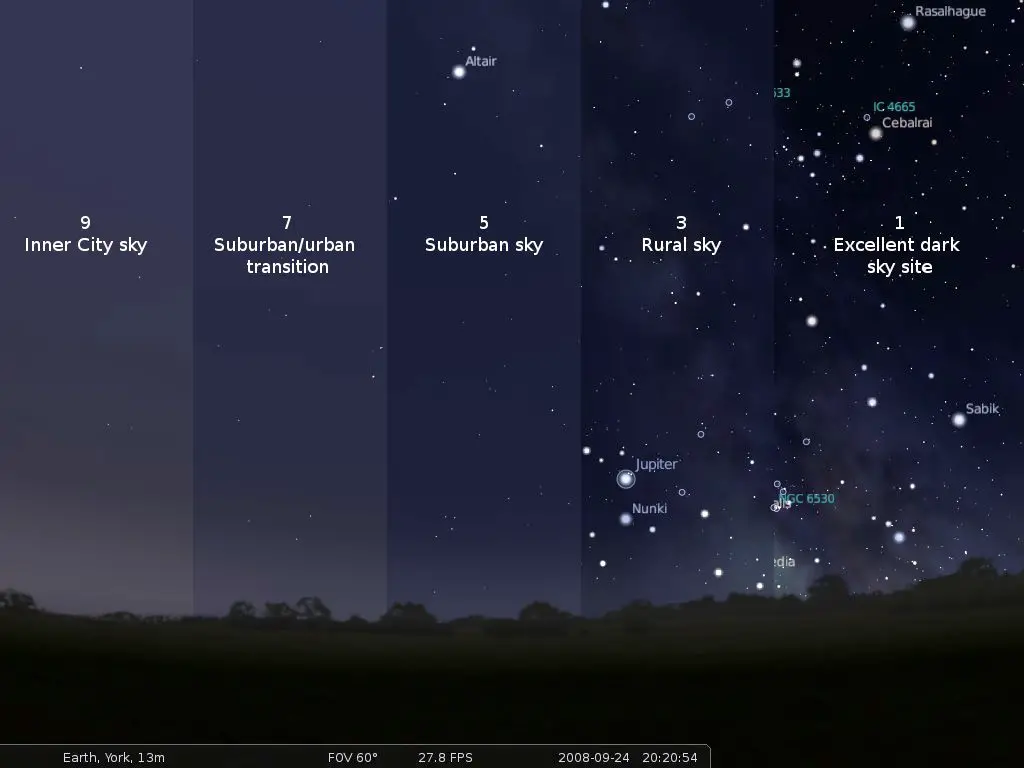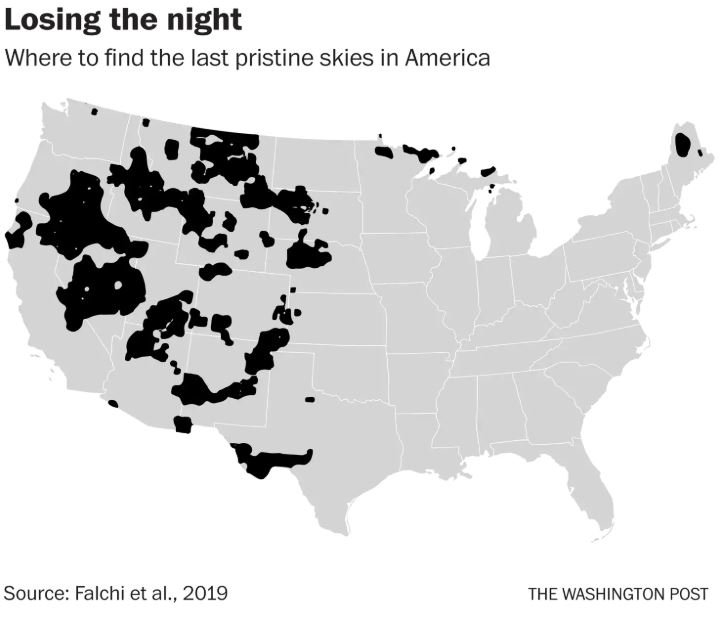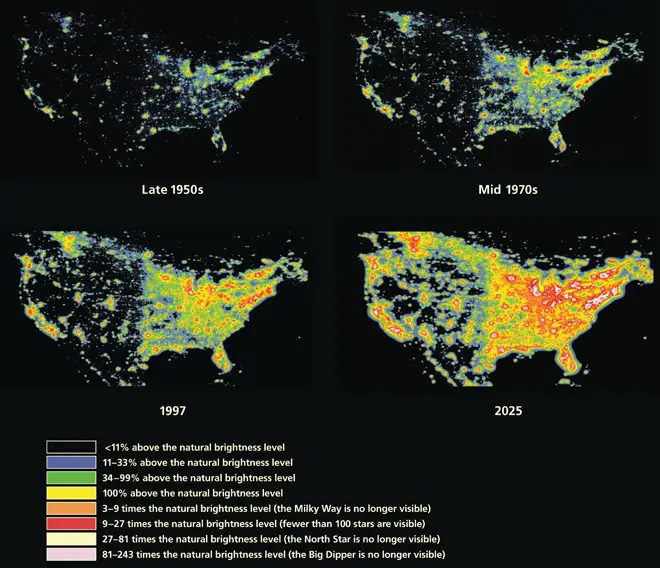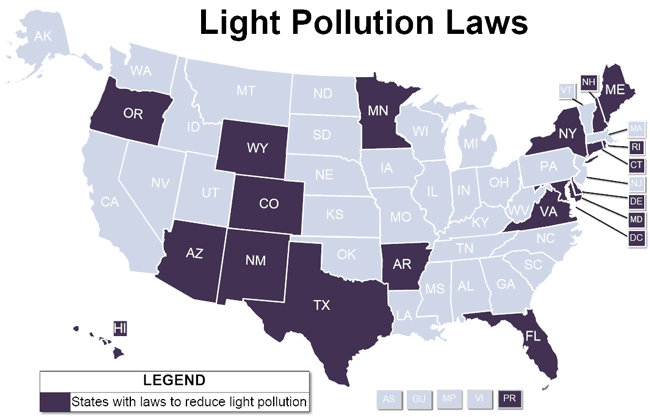Light Pollution in the United States
Light pollution is human-made light (streetlights, advertising, building lighting) that disrupts ecosystems and has harmful health consequences.
Although light pollution exists throughout the day, its impacts are intensified through the night with the difference of night. It has been determined that 83% of the people worldwide live under light-polluted skies and that 23% of the globe’s landmass area is affected by skyglow. Light pollution hides the Milky Way from 80% of Americans.

Light pollution is most strongly in densely populated and highly industrialized areas of the United States. The eastern part of the United States has the highest level of light pollution. D.C. is the most light-polluted area of the U.S., with higher than 200 thousand times the artificial brightness of the U.S. darkest spot, the city of Yakutat in Alaska.

According to Washington Post, amongst the U.S. most populous cities, Washington also excels as being the most distant removed from an area with clear night skies: a few more than eight hundred miles (1.3 thousand kilometers). By opposition, the spectacularly lightened Las Vegas is a little more than one hundred miles (160 kilometers) away from the pristine atmosphere of northern Arizona.

Darkness is crucial to our physical health. For centenaries before the increase of artificial light, homo sapiens had become related to a day-night cycle. This cycle, closely connected with our circadian rhythms, is dramatically influenced by the presence of light at night.
Disturbance of the circadian rhythm has been connected to sleep disturbances, prolonged sleep-phase syndrome, hypertension, heart disease, attention deficit hyperactivity disorder, depression, obesity, and diabetes.
Another crucial biological function disturbed by light at night is melatonin generation, anti-oxidant, anti-carcinogen, effective for regulating metabolism and immune responses. According to research published in the journal Environmental Health Perspectives, women who reside in areas where it is artificial light enough to read a book outside at midnight had a 73% higher risk of developing breast cancer than women existing in less brightly lit areas.
But humans aren’t the unique beings affected by light pollution. Different aspects of life for animals such as feeding, reproduction, hunting, migration, and reproduction are considerably affected by light pollution.
Recognition of the harmful impacts of light pollution started beginning in the twentieth century when light pollution across the United States increased significantly. The map below shows changes in levels of light pollution across the lower 48 U.S. states between the late 1950s and 2025.

Nowadays, at least 18 U.S. states, the District of Columbia, have laws to reduce light pollution.

Most of these U.S. state laws are confined to outdoor lighting accessories situated on the territories of a state building or a roadway. The legislation demands the installation of shielded light installations which transmit light only downwards. Other legislation expects the use of low-glare and low-wattage lighting, managing the amount of time that specific lighting can be applied.








